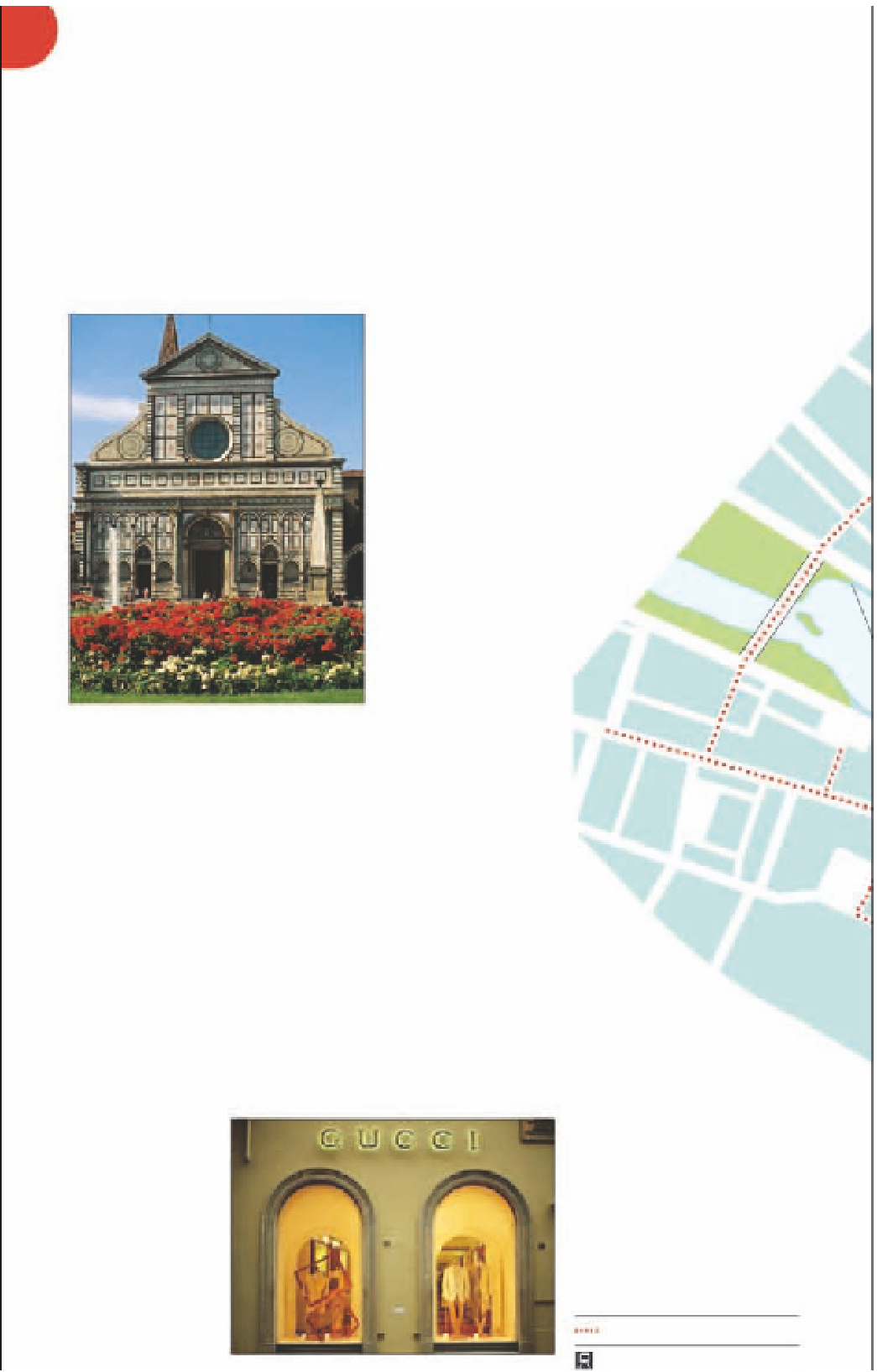Travel Reference
In-Depth Information
A 90-Minute Walk to Piazza Santo Spirito
This walk begins under the clock at the Santa Maria
Novella train station, which is one of the city's few
significant modern buildings. It takes you to one of
Florence's greatest churches, leads along one of the
city's most fashionable shopping streets, and visits
Piazza Santa Trinità, with its elegant medieval palaces.
You cross the Arno river into the western limits of the
Oltrarno area with its fascinating artisan workshops,
taking in Piazza del Carmine and finishing in the heart
of the Bohemian district at Piazza Santo Spirito.
Piazza Santa Trinità
Walk past Palazzo Strozzi
(see
p105)
and down to Piazza
Santa Trinità
6
(see p108)
,
which marks the meeting of
three ancient Roman roads and
is lined with noble palaces.
Walk towards the river and
turn right along Lungarno
Corsini. At no. 2 is Palazzo
Masetti
7
, today occupied by
the British Consulate but once
the home of Bonnie Prince
Charlie's widow, the Countess
of Albany, who later married
the dramatist Vittorio Alfieri.
The huge building a little
further down on the right
is Palazzo Corsini
8
; it
houses the Corsini
family's private art
collection
(entrance on
renovation. At the
southern end is the
Loggia di San Paolo, a
copy of Brunelleschi's
famous Loggia degli
Innocenti dating from
1489. In the 17th
century the piazza was
used for carriage races
and the two obelisks
sitting on turtles
marked the turning
points. Exit the square
on the south side
along Via dei Fossi
and turn left into Via
della Spada, a busy
local shopping street.
On the right is the
former church
of San Pancrazio
4
,
one of the oldest in
Florence and, today,
home to the Museo Marino
Marini
(see p104)
. Turning
left into Via delle Belle
Donne, right into Via del
Trebbio and right again will
bring you out in Via de'
Tornabuoni with its impressive
mansions and designer shops
(see p105)
. On the corner is
Palazzo Antinori
5
(see
p112)
, built by Giuliano da
Maiano from 1461-69; you
can walk into the splendid
courtyard. Note the 17th-
century church of San
Gaetano across the road with
its a fine Baroque façade.
View across the Piazza Santa Maria Novella
to the parish church
1*";;"%*
$&45&--0
3
E
Stazione di Santa Maria
Novella
Begin under the digital clock
on the south side of Florence's
main train station
1
(see
p113)
. Designed in 1935, this
is one of the few important
“modern” buildings in a city
dominated by Medieval and
Renaissance architecture. The
Italians invented the digital
clock and the one here is an
early version. Cross over
Piazza della Stazione and bear
left towards the back of the
great parish church of Santa
Maria Novella
(see pp110-11)
2
1*";;"
%&/&3-*
1*";;"%&-
$"3.*/&
K
Via del
Parione),
which includes
works by artists
such as Botticelli.
At Piazza Carlo Goldoni
(named after the playwright
whose statue is on the far
side), continue west along
Borgo Ognissanti which
opens onto the Arno at Piazza
Ognissanti
9
. Palazzo Lenzi,
on the right, was built in the
mid-15th century and has a
. Follow the
arched recesses
along one side of
the church, which
were once the
family vaults of
Florentine nobles,
and you will
emerge in the
Piazza Santa Maria
Novella
3
, a
once scruffy
square that has
undergone
0 metres
300
0 yards
300
KEY
Suggested route
Train station
A designer shop in chic Via de' Tornabuoni







































